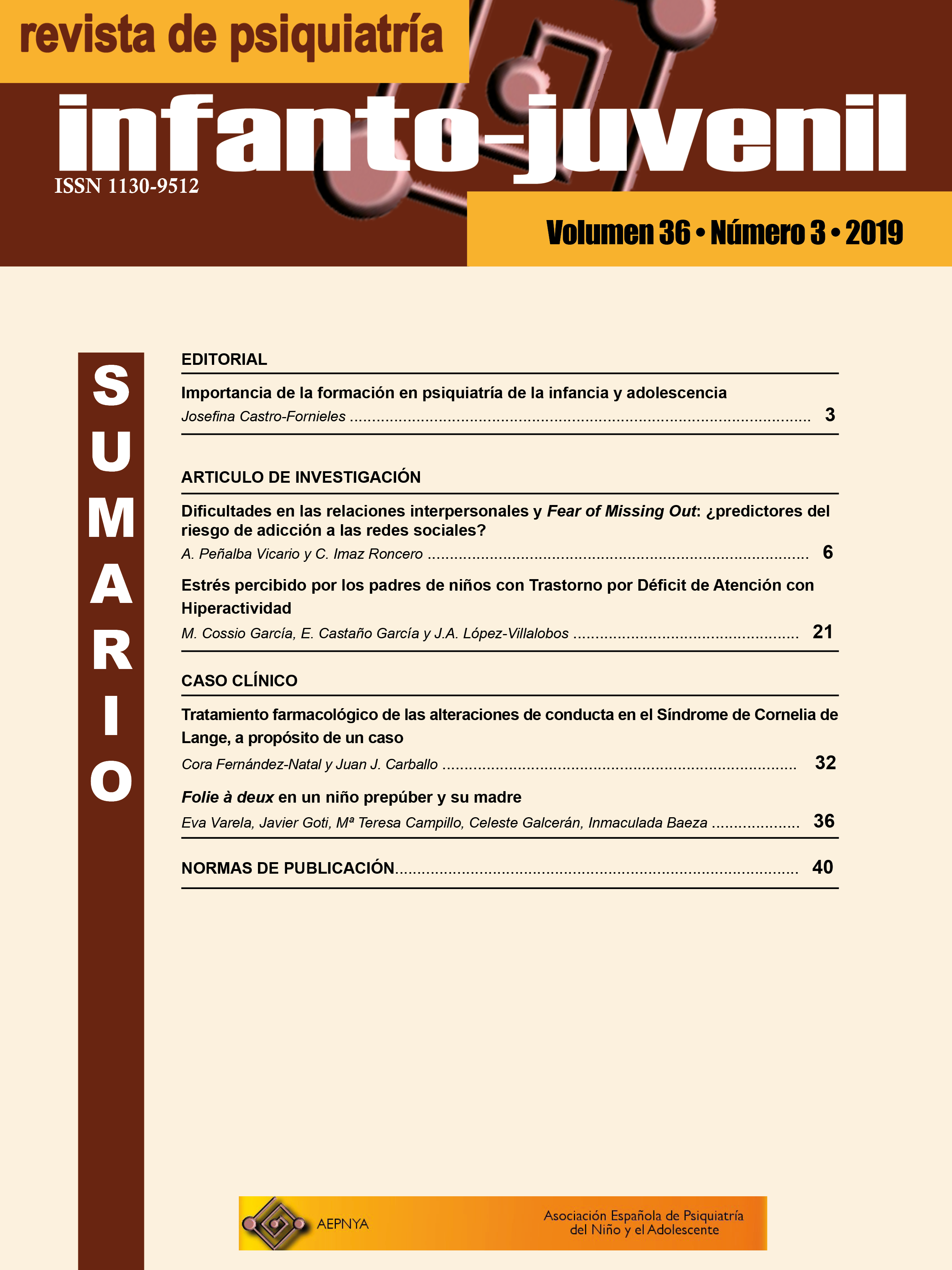Folie à deux en un niño prepúber y su madre
Descargas
Publicado
Cómo citar
Número
Sección
DOI:
https://doi.org/10.31766/repsij.v36n3a5Palabras clave:
Psicosis inducida, psicosis compartida, folie à deux, prepúberResumen
El Trastorno psicótico compartico (DSM-5) o Trastorno por ideas delirantes inducido (CIE-10), tradicionalmente conocido como “folie à deux” es una patología rara, probablemete infradiagnosticada debido al grave aislamiento social y falta de conciencia de enfermedad que caracteriza a estos pacientes. Se han publicado algunos casos clínicos y revisiones sobre este trastorno, mostrando que la mayoría de relaciones se establecen en el núcleo familiar, sobre todo entre parejas. Hay pocos casos documentados que se presenten en un paciente inducido menor de edad. Se describe un caso clínico de una díada madre-hijo menor de edad, seguida de una breve discusión basada en la literatura.
Descargas
Citas
Enoch D, Ball H. Síndromes raros en psicopatología. 1 ed. Madrid: Ed Triacastela; 2007
Arnone D, Patel A, Ming-Yee G. The nosological significance of Folie à Deux: a review of the literature. Ann Gen Psychiatry. 2006; 8:5-11. https://doi.org/10.1186%2F1744-859X-5-11
Ilzarbe D, Vigo L, Ros-Cucurull E, Baeza I, Sugranyes G. A case of folie à trois induced by a child. J Clin Psychiatry. 2015; 76: e119. https://doi.org/10.4088/JCP.14cr09295 DOI: https://doi.org/10.4088/JCP.14cr09295
Vigo L, Ilzarbe D, Baeza I. Banerjea P, Kyriakopoulos M. Shared psychotic disorder in children and adolescents: a systematic review. Eur Child Adol Psychiatry. 2019 Dec; 28: 1555-66. https://doi.org/10.1007/s00787-018-1236-7. DOI: https://doi.org/10.1007/s00787-018-1236-7
Zillessen KE, Trott GE, Warnke A. Induced delusional disorder in childhood and adolescence. Z Kinder Jugendpsychiatr Psychother. 1996; 24:117-126. DOI: https://doi.org/10.1017/S1352465800017380
Reif A, Pfuhlmann B. Folie a Deux versus genetically driven delusional disorder: case reports and nosological considerations. Comp Psychiatry. 2004; 45:155-160. https://doi.org/10.1016/j.comppsych.2003.09.004 DOI: https://doi.org/10.1016/j.comppsych.2003.09.004
Dodig-Ćurković K, Curkovic M, Degmecic D et al. Shared psychotic disorder (“folie a deux”) between mother and 15 years old son. Coll Antropol. 2008; 32:1255-8.
Shiwach RS, Sobin PB. Monozygotic twins, folie à deux and heritability: a case report and critical review. Med Hypotheses. 1998;50: 369-374. DOI: https://doi.org/10.1016/S0306-9877(98)90207-9
Lerner V, Greenberg D, Bergman J. Daughter-mother folie à deux: immigration as a trigger for role reversal and the development of folie à deux. Isr J Psychiatry Relat Sci. 1996; 33:260-4.
Çuhadaroğlu Çetin F. Folie à famille and separation-individuation. Eur Child Adolesc Psychiatry. 2001; 10:194-199. https://doi.org/10.1007/s007870170026 DOI: https://doi.org/10.1007/s007870170026









 © 2021 AEPNyA Todos los derechos reservados
© 2021 AEPNyA Todos los derechos reservados
